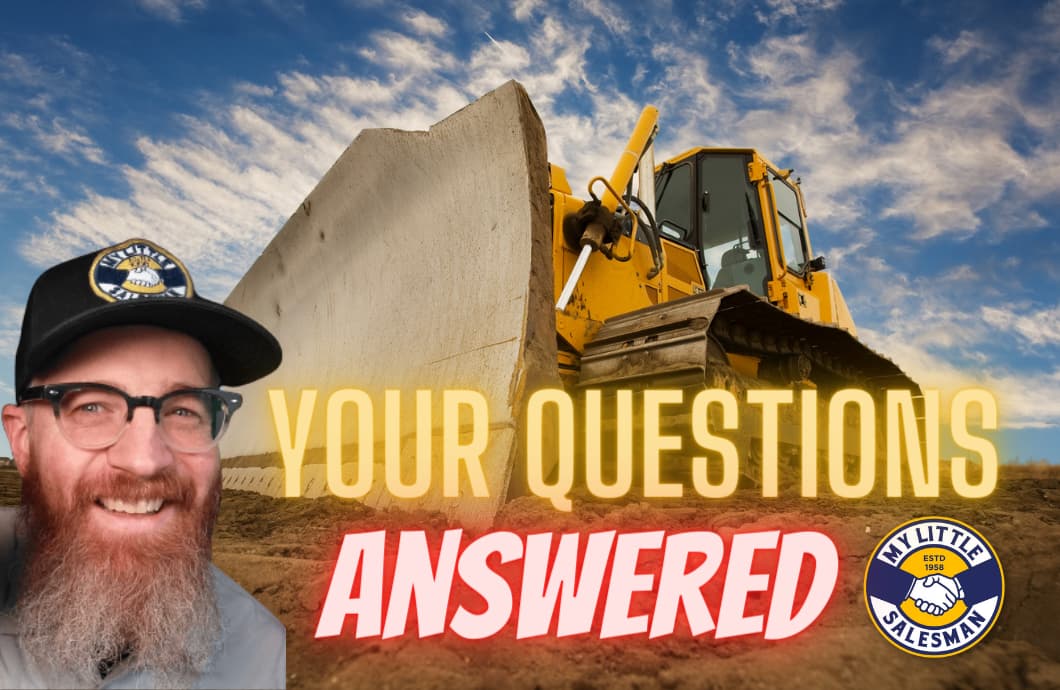
"What should I look for when buying a bulldozer?"
Whether you’re looking to buy a new or used bulldozer for sale, either way, think of it as an investment. That being said, the condition, quality, and functionality of the bulldozer you buy will make it a good investment or a...not so great investment.
For this reason, we’ve put together this bulldozer buying guide to assist you in making the best buying decisions possible.
We’re going to look at:
Before we get started, let’s make sure we’re all on the same page with a working definition of a bulldozer.
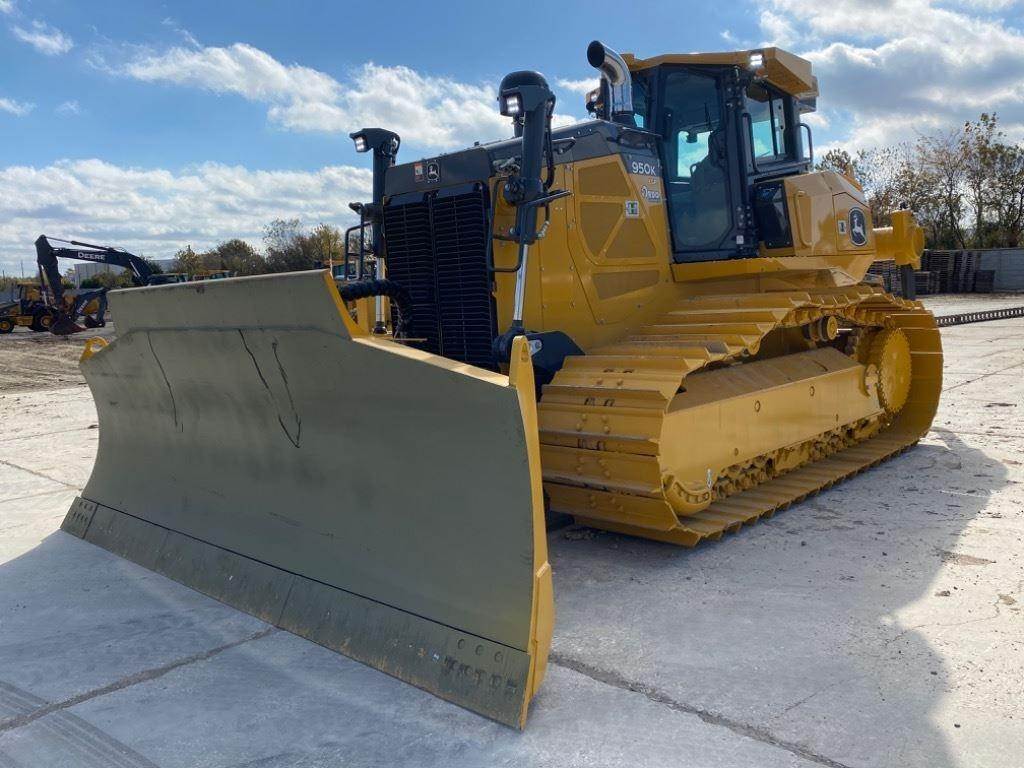
A bulldozer is a piece of heavy equipment frequently used for construction and demolition projects. Most bulldozers consist of a set of metal tracks that flank an operator cab and a powerful engine. These tracks are used to drive a large blade that is attached to the front of the equipment that is used to push earth, demolition debris, mined materials, and other materials to a designated location. The blade can also be used to level out surfaces—such as for road construction. Bulldozers were first and most popularly used in agricultural settings to clear land for farming and ranching but have expanded their utility.
Bulldozers come in various sizes and can be outfitted with many attachments.
Though bulldozers and wheel loaders can do many of the same jobs, each has its strengths and weaknesses.
Wheel loaders ride upon four wheels equipped with rubber tires—allowing them to carefully maneuver over various kinds of terrain. Wheel loaders also feature a front blade capable of scooping and lifting materials for transport.
Bulldozers, on the other hand, contain two tracks—less maneuverable, but with a lower center of gravity and increased traction. Bulldozers are designed for pushing materials across a surface or grading said surface to make way for new construction or agriculture rather than lifting up to transport.
Bulldozers are well suited for a variety of jobs—but not every job! Let’s take a quick look at where bulldozers really shine as well as where other pieces of equipment may be a better option.
Bulldozers Rock for Earthmoving
When it comes to pushing earth across spaces, you can’t really beat a bulldozer. So, whether you need a flatter surface during excavations or materials distributed, a bulldozer is often the tool for the job.
Bulldozers for Road Construction
If you’ve ever driven past a road construction project, there’s a good chance you’ve seen a bulldozer or two on-site. Not only are bulldozers the heavy equipment of choice for clearing land, but they are also great for leveling off cleared ground to make way for roads and their corresponding drainage solutions.
Bulldozers for Clearing Land
Related to making roads, bulldozers are great for evening out surfaces in preparation for construction projects. They can easily push away organic debris and leave a nice, flat trail in their path ready for other equipment to begin building or for farming operations.
Bulldozers for Demolition
For lower structures or among the rubble of a recently toppled structure, bulldozers can lend a hand on demolition sites. Few structures are any match for a bulldozer—and after the structure has been knocked down, the same bulldozer can push the demolition debris away for removal.
Bulldozers for Forestry and Logging
Due to their immense traction and land-clearing abilities, bulldozers are immensely popular in the forestry and logging industries. Logging bulldozers tend to be outfitted with attachments such as winches, brush cutters, and other tree-clearing implements.
Bulldozers for Mining Operations
Many open-pit mines use bulldozers to push earth, rocks, and desirable materials to their intended areas—either for additional excavation or extraction. Bulldozers are also exceptional mining tools due to their ability to help create new flattened pathways to mining sites. Mining bulldozers are typically outfitted with larger, more robust blades designed to withstand the material demands of working in the mine.
Bulldozers for Waste Handling & Landfills
There are models of bulldozers that are equipped with features that make them great for waste handling and landfill management. These features include waste blades, specialized tracks, and air filtration systems for operator comfort and safety.
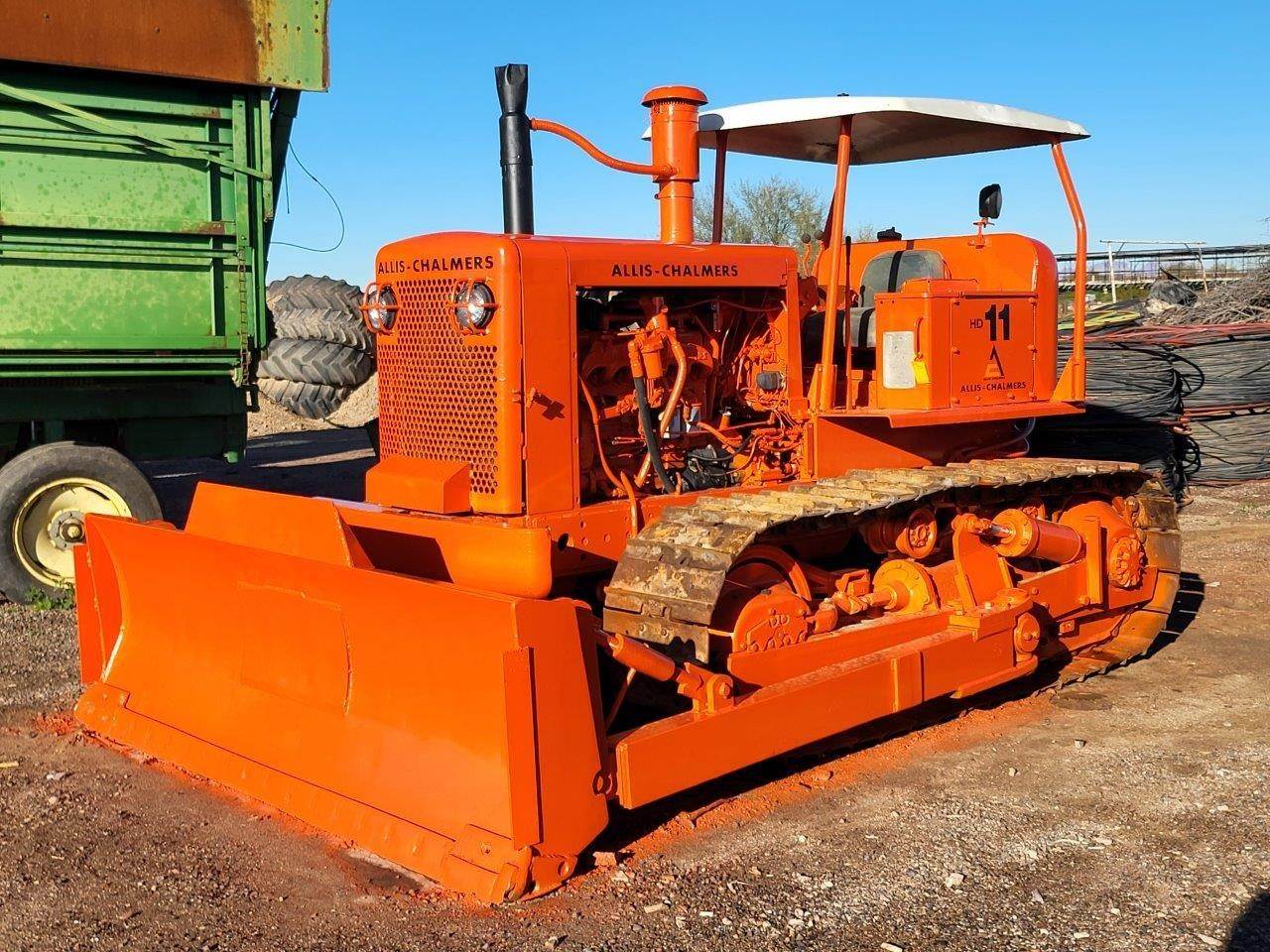
A classic Allis-Chalmers bulldozer—Ken's favorite.
Bulldozers come in four size categories—mini bulldozers, small bulldozers, medium bulldozers, and large bulldozers.
Mini Bulldozers
Got tight spaces where you need a bulldozer? A mini bulldozer could be just the ticket. Coming in at only about 10 feet long and under 10,000 pounds, mini bulldozers are great for smaller construction, landscaping, and agricultural projects. They’re also fairly fuel efficient by comparison with a 30-70 horsepower engine.
Small Bulldozers
Though deemed “small,” small bulldozers are excellent for medium-sized tasks—usually moving between residential to commercial projects. Weighing between 10,000-20,000 pounds, you’ll need to be more conscious of the terrain, but that weight also means great traction. And to assist with this is a horsepower range between 70-130 horsepower. This power makes small bulldozers great for pushing material or grading surfaces on smaller construction sites.
Medium Bulldozers
Weighing in at around 20,000 to 70,000 pounds, medium bulldozers are some of the favorite pieces of heavy equipment for those needing a transportable bulldozer capable of heavy-duty work. Equipped with 130-320 horsepower engines, medium bulldozers are one step below the most demanding jobs in construction and demolition.
Large Bulldozers
The “large” bulldozer category tends to contain all of the largest bulldozers available—which means that anything more than 70,000 pounds with a horsepower of 320 to a staggering 900 horsepower. Large bulldozers are used on the largest forestry, mining, demolition, agriculture, and construction projects.
When looking at what kind of bulldozer to buy, you will need to consider what you need the bulldozer to accomplish.
“How big are my bulldozer projects?”
Bigger is better…right? Well, not always. When shopping for bulldozers, it pays to consider the size of the projects. Smaller bulldozers will be more nimble on cramped work sites, but will soon grow inefficient and inconsistent on larger projects. A bulldozer too small may not be able to keep up with time constraints. A bulldozer too big may become a logistical headache.
"What is the terrain like where I will need to use bulldozers?"
Before you shop for bulldozers, you will need to consider if the terrain where you will need to use the bulldozer is flat and hard or softer and muddy. In most instances, standard bulldozers will be just fine on flat and hard surfaces in which the concentrated weight of the bulldozer is useful. However, if you will need to use a bulldozer on softer or muddier terrain, the concentrated weight of a standard bulldozer can cause it to sink. For these instances, a low ground pressure bulldozer—also known as an LGP bulldozer—may be the better option. LGP bulldozers have a wider and longer track span that allows for greater continuous contact with the ground, allowing for distributed traction.
Though LGP bulldozers have greater stability, they also have a larger footprint and lower ground clearance. The larger footprint can make transportation a bit more complicated and the lower ground clearance can increase the likelihood of damage to the undercarriage or make traversing uneven terrain a bit more difficult.
“Which is better—an open cab or enclosed cab bulldozer?”
The choice to buy an open cab versus an enclosed cab bulldozer really depends on your operator’s preferences and your budget. Enclosed cabs with heating and air conditioning can make for comfortable operation year-round. They can reduce noise and help filter the surrounding air for use in landfills and mines—where wind-swept debris can be harsh. On the other hand, open-cab bulldozers can greatly increase operator visibility, allow for greater ventilation, and are generally less expensive than their enclosed-cab counterparts.
“What does the terrain look like for most of my bulldozer projects?”
Traction or steering—that is the question. Bulldozer tracks are best suited for gaining traction on loose material, but may not be as maneuverable as a wheel loader. Consider the terrain needs of your equipment before selecting a size of bulldozer or even if a wheel loaded may be better suited to your needs.
“How skilled are my team members and bulldozer operators?”
Does your crew have the skills to pay the bills? The more bulldozer you buy, the more skill your team needs to possess—not only operators but transport crews as well.
This means you need to either (a) train up your existing crew or (b) hire skilled team members. Both of these require significant investments—not including the cost of larger bulldozer ownership.
The cost of bulldozers will vary widely depending on the equipment’s age, condition, operating hours logged, and if it has been outfitted with any specialized equipment. This is a disclaimer that the following figures may vary dramatically.
The Cost of Mini Bulldozers
Depending on the brand, style, and other variables, new mini bulldozer models can cost between $40,000 and $90,000. Used mini bulldozer models can run anywhere from $15,000 to $60,000 or more depending on the condition, usage hours, and additional attachments.
The Cost of Small Bulldozers
New small bulldozer models, depending on style and attachments, can cost between $60,000 to $100,000 or more. Used small bulldozer models can run between $40,000 to $60,000 depending on the condition, hours, and other factors.
The Cost of Medium Bulldozers
New medium-sized bulldozers almost always drift past the $100,000 mark—usually running between $120,000 and $270,000. Used medium-sized bulldozers can range in price from about $60,000 to around $170,000 or so—depending on various factors.
The Cost of Large Bulldozers
Sometimes called “heavy duty bulldozers,” new large bulldozers can start at $200,000 and ramp up to $1,000,000 or more depending on features and size. Used large bulldozers for sale can start at around $110,000 and go up to $600,000 or more depending on their condition, hours, size, features, and more.
It can be easy to feel like you’re out of your depth when it comes to buying a used bulldozer—but you’ve got this! By understanding a handful of concepts, you should feel confident about your used bulldozer purchase. This being said, it's a great idea to have any bulldozer you’re considering buying first inspected by an experienced heavy equipment mechanic.
But this isn’t cheap! To save you several hundred dollars per model, let’s help you narrow your list of maybes.
Inspecting a Used Bulldozer Undercarriage
Though it sounds odd, the undercarriage of a bulldozer can speak volumes about the condition and past treatment of the equipment. Not only is an undercarriage one of the most expensive components to replace for a bulldozer, but it also does a good job of tattling on past owners—giving you a decent idea about how it was used and maintained.
Look over the tracks, idlers, sprockets, rollers, and other parts that help the bulldozer move. Fixing these will be expensive, so you want to make sure they’re in good shape. When in doubt, run any oddities by a mechanic.
Inspecting a Used Bulldozer’s Blade and Mountings
Because the blade is where any used bulldozer connects with the material it needs to spread or push, the condition of the blade can give you an idea of the bulldozer’s usage and treatment. Inspect the blade for bends, dents, cracks, or even missing parts. The cutting edge should be sharp and not overly worn. Look over the hydraulic cylinders and mountings for bends, cracks, or leaks. Make sure to test all hydraulic components to ensure they’re in good working order. During a test drive, raise and lower the blade and make sure that it can be locked in all intended positions. If any functionality of the blade is lacking, that means it requires additional repair.
Inspecting a Used Bulldozer’s Operator Cab
Because a bulldozer must be operated from the cab (until remote control technology takes off), the cab will tell you quite a bit about how the machine has been treated.
Start with a simple comfort check of the seat and controls—checking for seat and seatbelt wear as well as damage to any of the controls. If the cab is enclosed and has heating, air conditioning, or other ventilation, make sure all features are in working condition to ensure operator comfort. Check the windshield for cracks as well as the condition of the roll cage. If the cab contains damage, rust, missing parts, or inhibited visibility, this doesn’t bode well for the treatment of the used bulldozer.
Used Bulldozer Engine Condition
It is crucial to inspect a used bulldozer’s engine for cracks, leaks, and fluid levels. Coolant should be free of any contamination. The engine should run smoothly without excessive noise, exhaust, smoke, or movement. To be safe, it’s best to have an experienced heavy equipment mechanic inspect the engine.
Used Bulldozer Operating Hours
A bulldozer’s usage quantity is accounted for using operating hours. Low usage hours for used bulldozers range from 1,000-2,000 operating hours. Medium usage hours for used bulldozers are around 2,500 to 5,000 operating hours. Anything above 5,000-7,000 hours for a used bulldozer is considered on the higher end for a full-time machine—with most lifespans topping out around 10,000 operating hours.
This being said, the usage hours for an older part-time bulldozer for non-commercial uses (perhaps on a family farm or personal property) may be less crucial.
Used Bulldozer Maintenance and Repair Records
When buying a used bulldozer—or any heavy equipment, for that matter—the less mystery, the better—including whether or not past owners have maintained it properly. There are few better ways to kill these two birds with one stone than obtaining a bulldozer with detailed maintenance and repair records.
If you have the choice between a few different used bulldozers for sale in similar conditions, extensive maintenance and repair records can tip the scales in their direction.
Let's look at some of the most popular bulldozer manufacturers, in no particular order.
Caterpillar

Also known simply as "CAT," Caterpillar is one of the most recognizable heavy equipment brands in the world—including making high-quality bulldozers. Caterpillar bulldozers are known for making an array of reliable bulldozer models and accessories.
John Deere

Possibly less known for bulldozers but well known for equipment, John Deere is an American company that makes great bulldozers. John Deere manufactures standard and low-ground pressure model bulldozers for various conditions and applications.
Komatsu
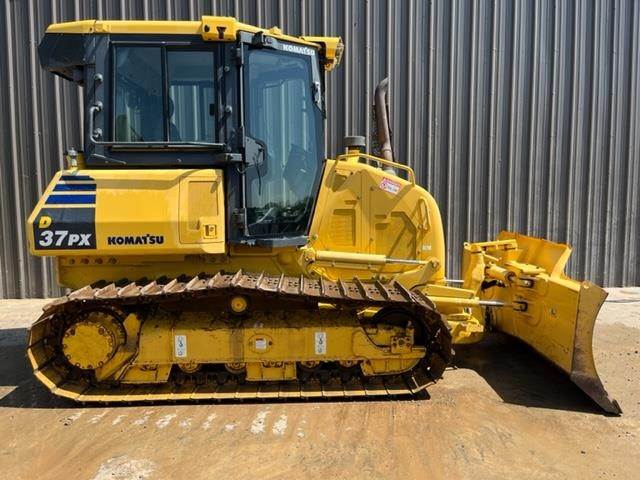
Komatsu is a well-known Japanese heavy equipment manufacturer known for bringing many technological advancements to the industry—including within their bulldozers. Komatsu bulldozer models include comfortable cabins and various sizes of bulldozers for everything from landscaping to heavy-duty mining.
Case
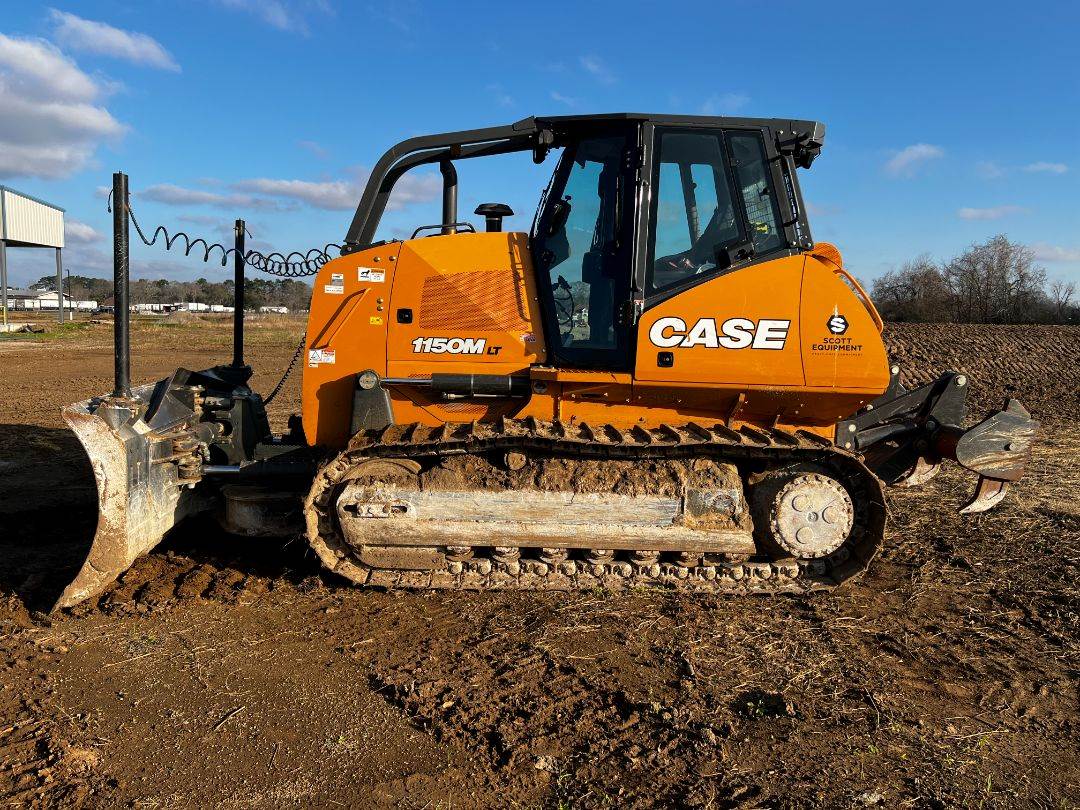
Case is an American favorite heavy equipment manufacturer known for putting out powerful, yet efficient bulldozers. Case bulldozer attachment configurations as well as horsepower levels make them very adaptable to the needs of a diverse market.
Liebherr
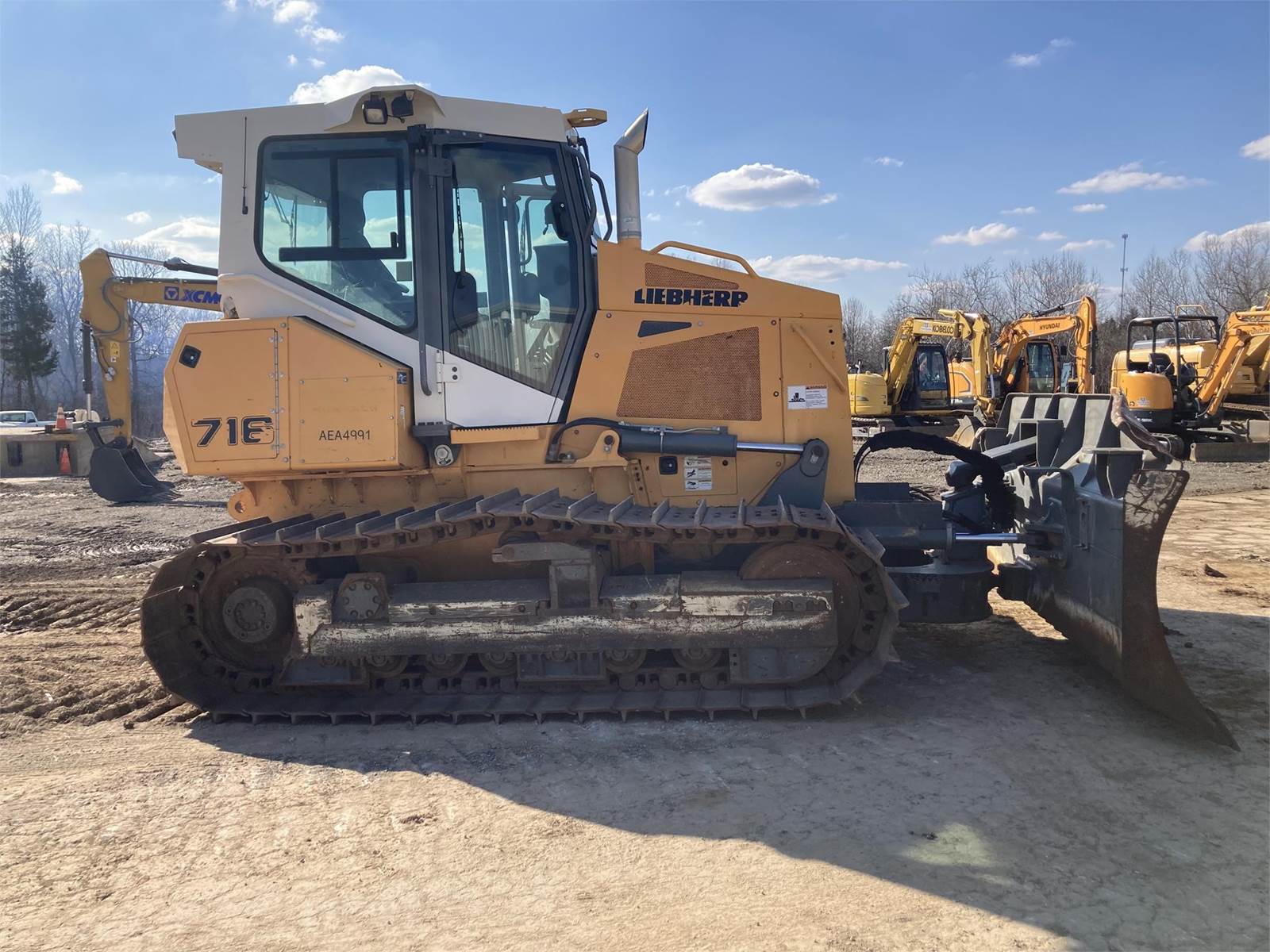
Liebherr is a German heavy equipment company known for bringing technology, comfort, and environmental efficiency to the world of bulldozers. Like Case, Liebherr bulldozers include a wide array of model sizes, power ratings, and available attachments.
Front Blades
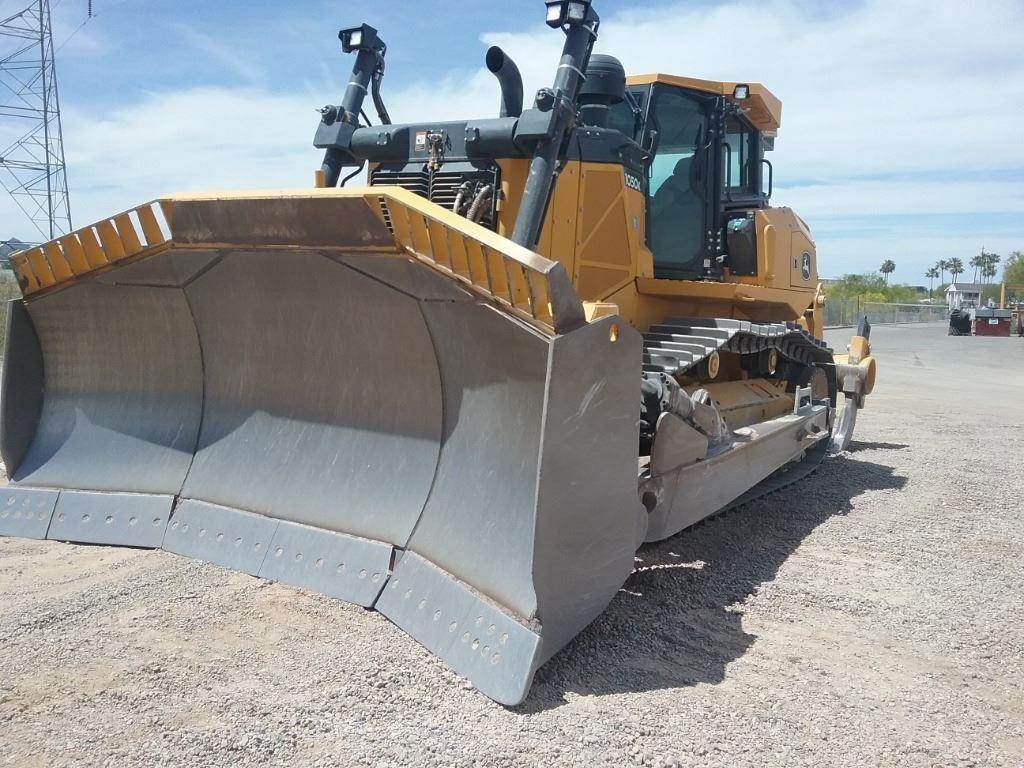
The most common and frequently used attachment for a bulldozer will be the front blade. Bulldozer blades come in an array of shapes and styles depending on what kind of work needs to get done. Some of these blades include straight blades, S-shaped blades, and U-shaped blades. Each of these blades can be controlled to change their angle (to push material off to one side) or lifted to control the amount of material pushed.
Ripper Attachments
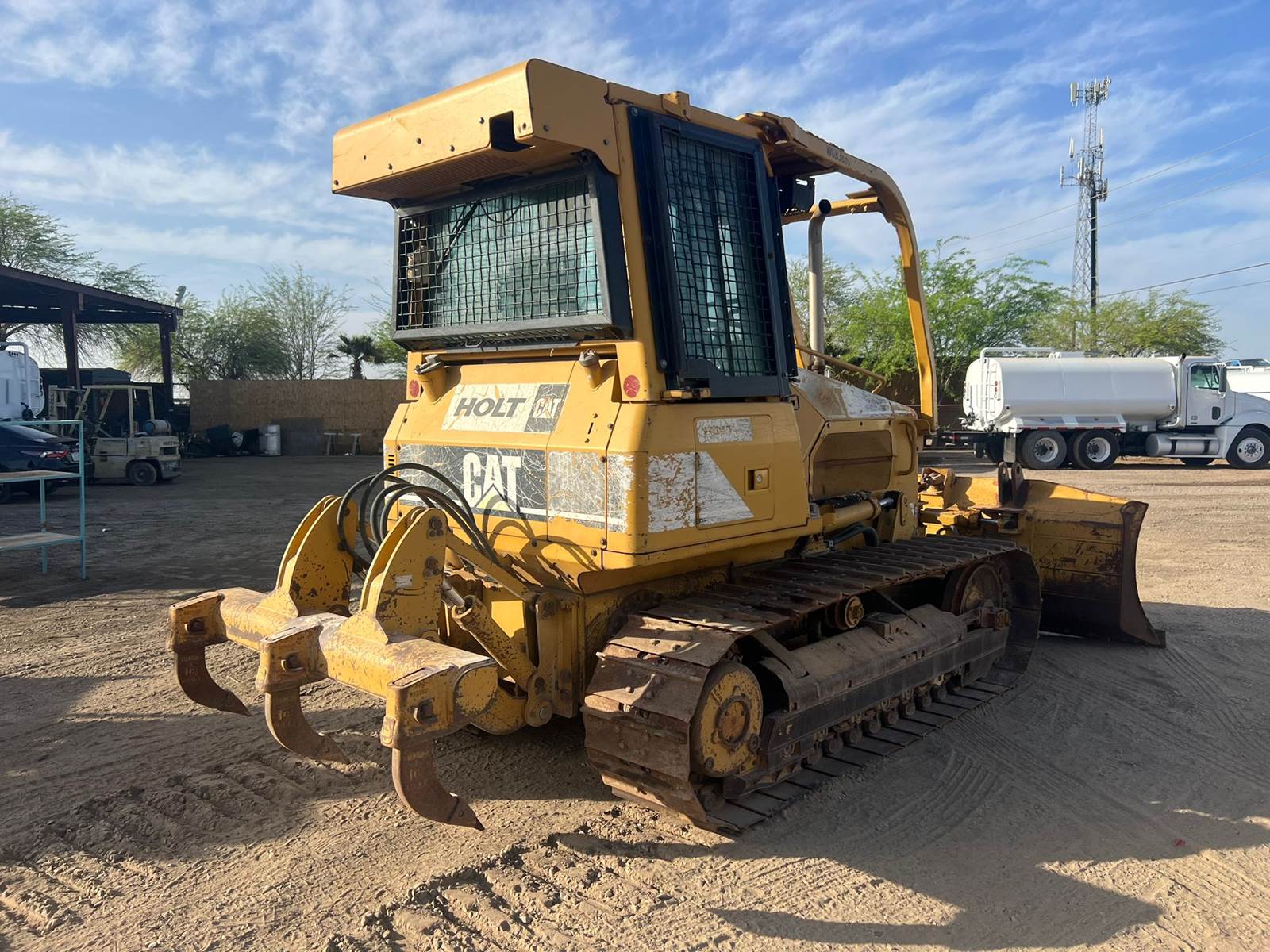
Ripper attachments for bulldozers are long shanks usually mounted off the back of a bulldozer. These long shanks use the equipment's weight and power to dig through a variety of materials.
Winch Attachments
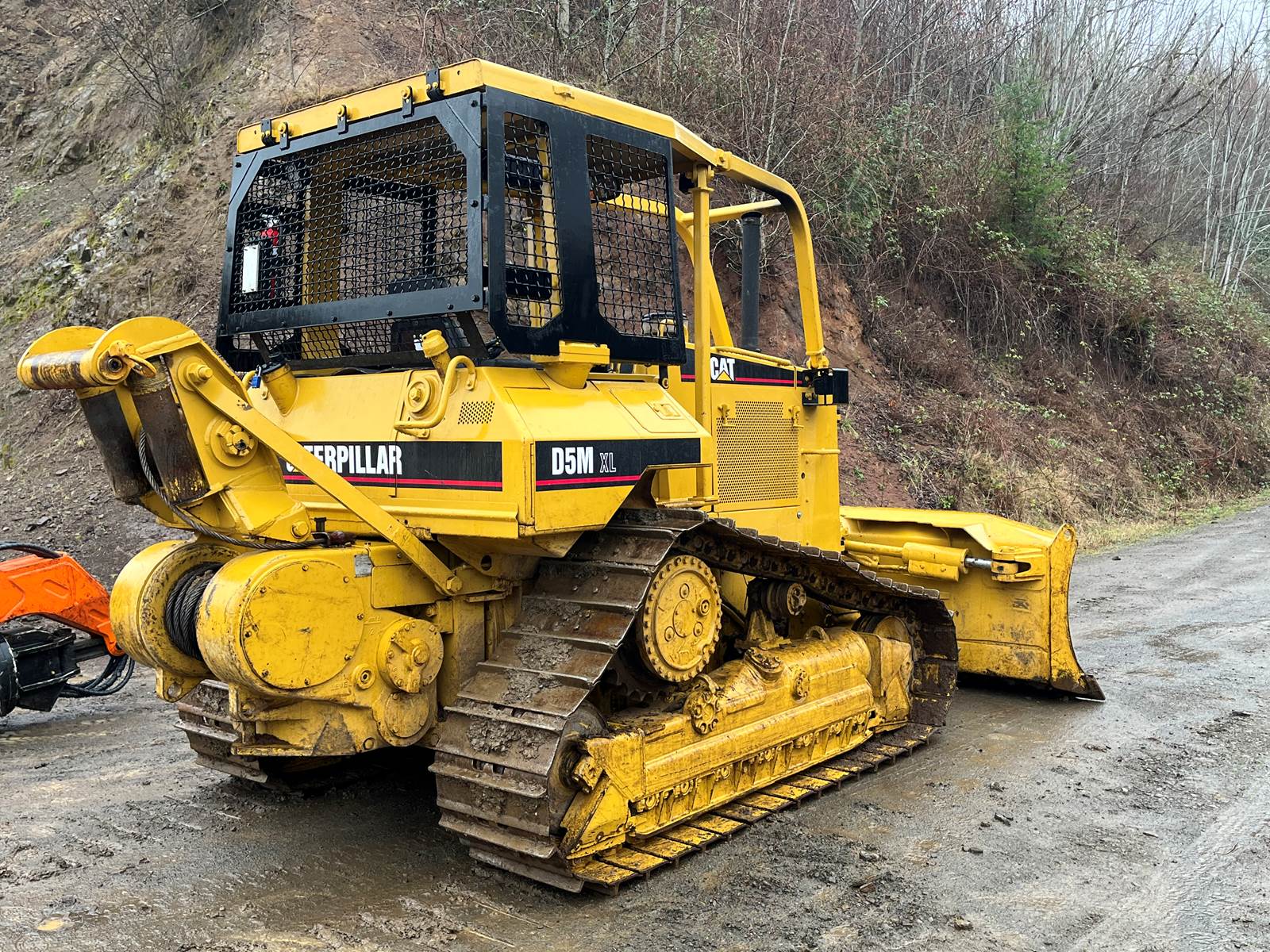
Like winch attachments elsewhere, winches for bulldozers are mounted cable spools that use the traction of the dozer to pull on rocks, logs, or other items to drag or dislodge them from the ground or other positions.
Rake Attachments
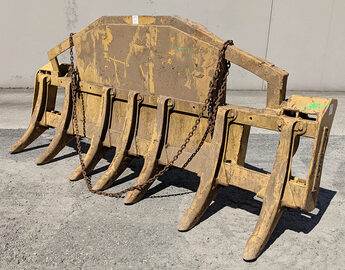
Rake attachments are usually mounted on the front of a bulldozer and include several tines that are immensely useful for clearing buried debris from a site—such as large rocks and tree roots.
Mulcher Attachments
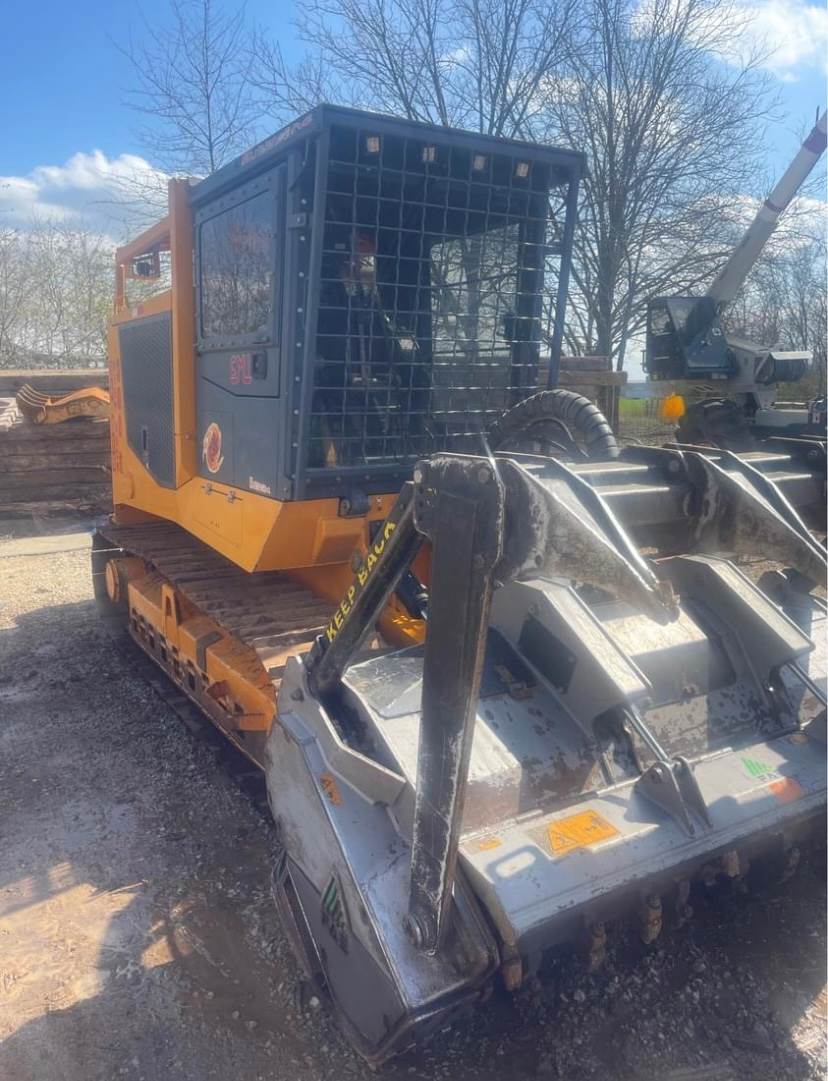
Mulcher attachments for bulldozers are front-mounted mechanized drums with sharp steel teeth used to shred vegetation—essentially turning bulldozers into the heaviest-duty lawnmowers or mobile woodchippers.
“Is a bulldozer a good investment?”
A bulldozer can be a great investment if you’re using it regularly for earthmoving or construction projects. However, for bulldozer ownership to be profitable, the revenue must always exceed the cost of ownership—which also includes insurance, transportation, operation, storage, financing, and the like. For this reason, it is also extremely important to keep your bulldozer in great working condition with regular maintenance and repairs as needed.
“How much money can I make with a bulldozer?”
Depending on the type of work and size of equipment, your bulldozer can generate anywhere from $100 to $500 per hour of usage.
The amount of revenue your bulldozer can generate depends on how the equipment is used. This consideration includes the size of the bulldozer, how much earth is moved per hour, and what it is being used to accomplish—whether that is assisting in excavation and land clearing or demolition, mining, road construction, and the like.
“What are the three main uses of a bulldozer?”
There are far more than three uses for a bulldozer but the main three would probably be land clearing, land leveling, and debris removal.
“Can a bulldozer pick up dirt?”
No, bulldozers are not used to pick up dirt—they only push it or tow materials. For picking up dirt, you’ll want to consider a wheel loader or some form of skid steer loader with a scooping bucket.
“Is a bulldozer at a construction site considered a capital good?”
Yes, bulldozers are considered capital goods due to their long-term performance in service of the construction and earth-moving industries.
“How much does it cost to own a bulldozer?”
Beyond the upfront cost of a bulldozer, which is listed above, there are many other costs associated with owning a bulldozer. These costs include insurance, storage, operation, financing, maintenance and repair, and others.
For a full breakdown of some of the costs associated with heavy equipment ownership, you’re invited to access our free guide entitled “The True Cost of Heavy Equipment: A Comprehensive Breakdown of Associated Costs.”
“What is the lifespan of a bulldozer?”
While high operating hours are considered 10,000 hours and higher, with the right maintenance and treatment, some older bulldozers can last 20,000 operating hours or more—albeit with questionable dependability. It all depends on how well a bulldozer is treated over its working lifespan.
“How many yards of dirt can a bulldozer move in an hour?”
The quantity of dirt the average bulldozer can move depends on a variety of factors—including the size of the blade, the power of the engine, operator skills, weather conditions, slope, and more. On average, however, the amount of dirt a bulldozer can move ranges between 30 to around 125 cubic yards of dirt per hour. But it really depends!
“Does a bulldozer have a title?”
Yes, much like a car or truck, a bulldozer has a vehicle title.
“Can you dig a hole with a bulldozer?”
No, bulldozers are designed for pushing and towing—not digging. That being said, bulldozers are often used in tandem with excavation projects for scraping or leveling the ground on site.
“How many pounds can a bulldozer push?”
The pushing capabilities of a bulldozer depend on its size and power. The average bulldozer, however, can push around 20,000 to 50,000 pounds.
“Is a bulldozer considered farm equipment?”
Though the design of the bulldozer was popular among farmers as a means of clearing land for farming, they are now primarily used for earthmoving and construction purposes.
“How big of a dozer do I need to clear land?”
The size of the bulldozer needed to clear land would really depend on the amount of land and type of debris you would need to clear. Choose a bulldozer with adequate horsepower and blade size to best fit your next land-clearing project.
“How steep of a slope can a dozer work on?”
Most bulldozers will be able to work just fine on slopes of about 30 degrees. Some specialized bulldozers can handle up to 60 degrees of slope or more without issue.
“How much does it cost to haul a dozer per mile?”
On average, the price can range from $3 to $8 per mile—making many lean on a $5 per mile figure. The cost to transport a bulldozer largely depends on the size and weight of the model bulldozer in question.
Transportation is certainly something to consider as a part of the costs associated with owning any piece of heavy equipment—and bulldozers are no exception.
“What is a lot of hours for a dozer?”
10,000 hours is considered fairly high for a working bulldozer. However, if maintained properly, some older bulldozers have seen 20,000 operating hours. It really depends on the quality of the bulldozer and how it was treated throughout its working life.
“Can bulldozers push over trees?”
While a bulldozer probably can push over certain trees, this is not the recommended way to clear trees. You not only risk damaging the bulldozer, but it’s not very safe or efficient.
“How many gallons of fuel per hour does a bulldozer use?”
Just like trucks, the fuel usage of bulldozers varies greatly depending on size and engine. However, the average bulldozer uses between 5 and 10 gallons of fuel per hour with bulldozer models on the larger end using upwards of 20 gallons per hour or even more.
“What is the best equipment to clear land?”
Depending on the debris that needs to be removed, a wide range of heavy equipment can be used to clear land. Bulldozers are great for demolition, debris removal, and surface leveling. While this is the case, excavators, skid steers, and forestry mulchers can also make short work of demolition and tree clearing.
“What are the pros and cons of a high-drive bulldozer?”
A high-drive bulldozer is a bulldozer with a final sprocket located in a higher position on the undercarriage than standard bulldozer models. This configuration allows high-drive bulldozers to have increased traction due to their more consistent contact with the ground while providing high-ground clearance.
Though high-drive bulldozers help crews increase the output of work on a job site, they require more fuel and maintenance than standard bulldozers. High-drive bulldozers also tend to cost considerably more than standard bulldozer models.
Buy Your Bulldozer With Confidence
All read up? Awesome! You are now equipped with the basic knowledge necessary to be an informed bulldozer buyer. Remember you can always consult this guide if you have any questions.
Find Your Next Bulldozer Today
Finding the bulldozer that fits your needs and budget doesn’t have to be complicated. To make the process as easy as possible, you’re invited to search through a selection of over a thousand bulldozers for sale and rent from sellers all over North America and beyond. You can filter your search by manufacturer, condition, model year, operating hours, horsepower, inspection status, price, or even state and country.